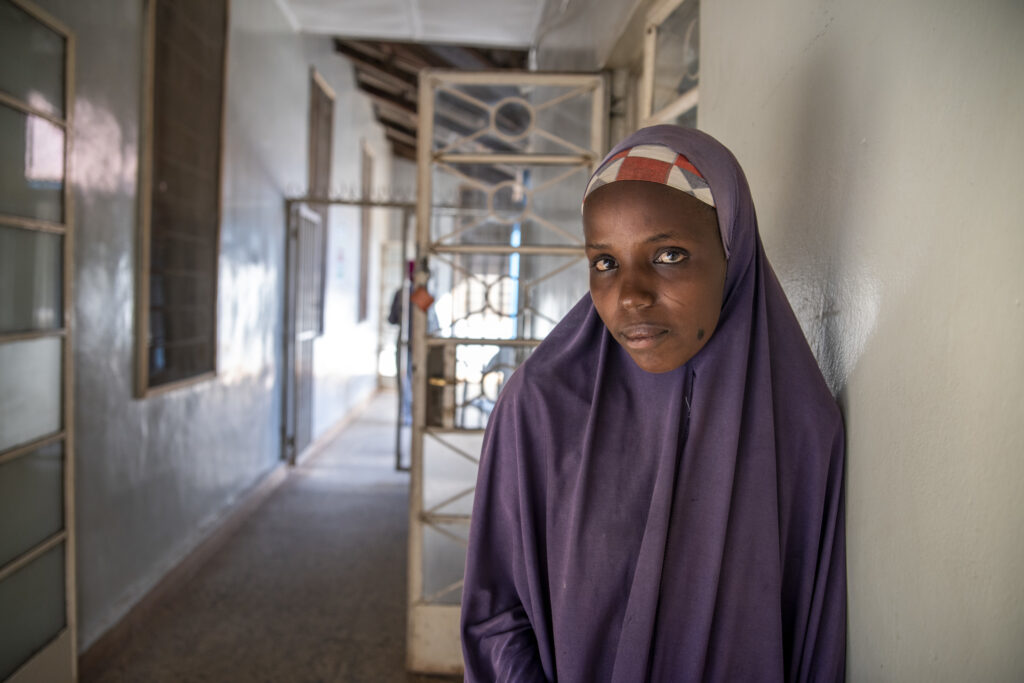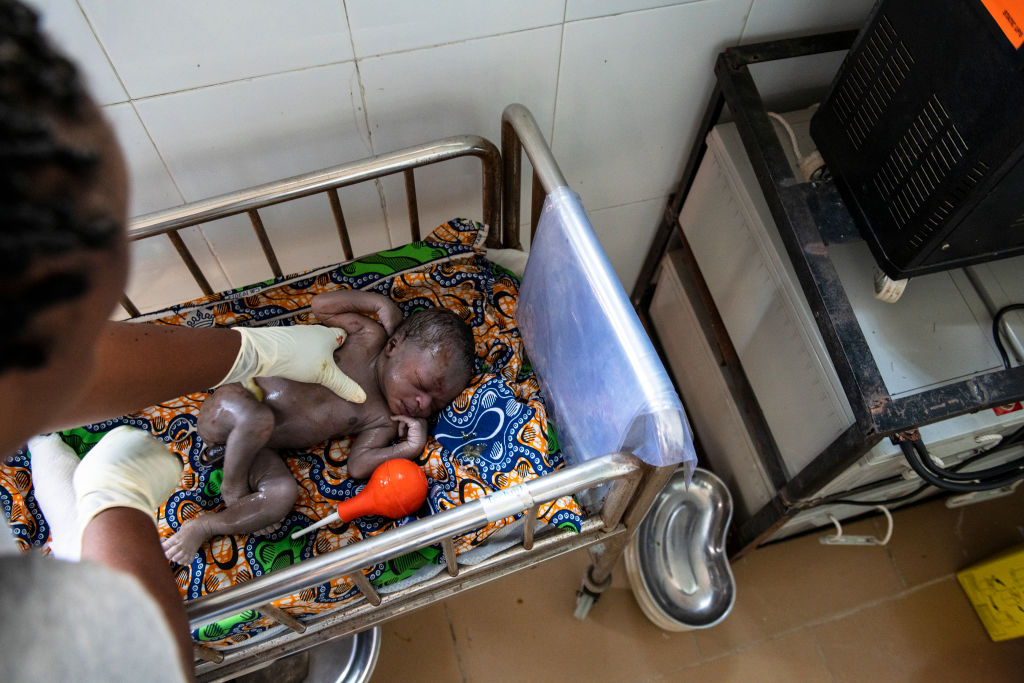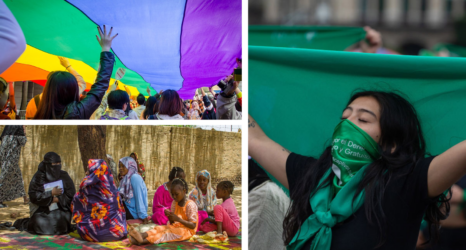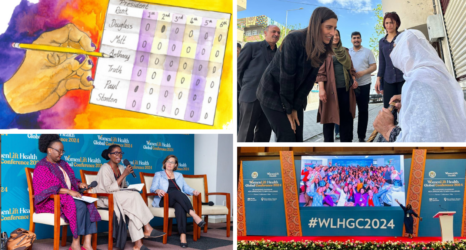The biggest health disparity between rich and poor is reflected in how likely a woman is to die while bringing new life into this world.

In a Northern Nigerian village in the state of Nasarawa, a 20-year-old woman named Hurairah waited in anxious anticipation for the birth of her first child. Like the vast majority of women in rural Nigeria, she was going to deliver her baby at home, a simple dirt-floored dwelling, with no doctor there if something went wrong.
When her contractions began, she knew she was experiencing one of the most important moments of her life. Soon, sweat plated her brow and searing pain raced through her body. As day turned to night and night to day, she remained in extreme pain, with her baby still lodged inside of her young body. She was fighting—fighting for herself and for her unborn child. As a mother in the making, she had to. But after days of agony and struggle, she finally delivered her baby—stillborn—a euphemism if there ever was one for a dead child.
In one way, Hurairah was lucky. She survived.
Every year, nearly 300,000 women don’t. They die because of pregnancy and childbirth. Ninety-five percent of those deaths are preventable, and they mostly happen in the poorest countries. The biggest health disparity between rich and poor is reflected in how likely a woman is to die while bringing new life into this world.
This is a call to arms. This is a cry to get angry, to get loud and to get to work. It’s time to get serious about investing in maternal healthcare across the world.
I am a mother, and my childbirth experience was not what I’d hoped for. I’d gone to weeks of childbirth classes, learning how to breathe through contractions, and even attended yoga for moms-to-be. My goal: a vaginal birth. But my baby was too big for my body and after 24 hours in excruciating labor, I was wheeled into the operating room for a C-section. But other than a bruised ego and a scar on my bikini line, I was okay. I survived, and so did my baby boy. If I’d given birth in Nigeria, it’s very likely my baby, like Hurairah’s, would have died.
For an American woman like me, the lifetime risk of death from childbirth is one in 3,000. For a woman in Africa’s most populous country, Nigeria, her lifetime risk is one in 21. This means that a Nigerian woman is nearly 150 times more likely than an American woman to die in childbirth.
If you think hard, the odds are good that there is no one in your extended family or high school class who has died giving birth. The same would not be true if you lived in Nigeria or most countries in sub-Saharan Africa.
Experts have said that these deaths are the “tip of an iceberg” for unnecessary suffering. For every woman who dies, another 20 to 30 suffer from preventable and treatable injuries like obstetric fistula—a childbirth injury that causes urinary and/or fecal incontinence and destroys a woman’s life.

I lead an organization called Fistula Foundation that helps treat women who suffer from these terrible injuries. They are women like Hurairah whose traumatic birth left her both mourning her dead child, but also enduring incontinence in a place without Depend pads and running water to clean herself. Women with fistula become a shell of their former selves, constantly leaking urine (or feces) while their friends, family and community too often abandon them because of their smell.
Most women like Hurairah have no idea that what they’re suffering from is treatable with surgery and they accept their suffering as fate. During labor and delivery, they didn’t have access to the obstetric care that could have protected them from this tragedy.
A decade ago, the United Nations and the U.S. government were supporting robust programs to help women like Hurairah. Today, their involvement is a fading shadow of its former self. Yet, women with fistula remain, trapped between two worlds—the life they knew and the life sentence of suffering that they are forced to endure.
Obstetric fistula is just a symptom of a larger problem: the global under-investment in maternal healthcare.
In 2015, the United Nations adopted the Sustainable Development Goals as a “shared blueprint for peace and prosperity for people and the planet.” One of those goals was to reduce maternal deaths from 216 to 70 per 100,000 births by 2030. So, how are we doing? According to projections from the Institute for Health Metrics and Evaluation and the Gates Foundation, by 2030 we’ll still have roughly 141 deaths per 100,000—double the target.
Why? Because governments have not invested in the programs and people that can save the lives of women. As Bill Gates has said, “Poverty is sexist.” There may be no better example of that than the women who die giving birth or the women who suffer needlessly afterwards because they couldn’t get help when their life or health depended on it.
We know the way forward. We must do better to save the lives of mothers who are bringing life into this world. This is a call to arms. This is a cry to get angry, to get loud and to get to work. It’s time to get serious about investing in maternal healthcare across the world.
This Mother’s Day, instead of purchasing overpriced greeting cards and wilting flowers, let’s put our money where our mouth is, and tell our governments to do the same. I want to see real change for the most vulnerable among us. I want mothers to live to see their babies grow up. I want babies to live beyond childbirth to experience the love of their mothers. I want action for all mothers. Women’s lives depend on it.
Up next:
U.S. democracy is at a dangerous inflection point—from the demise of abortion rights, to a lack of pay equity and parental leave, to skyrocketing maternal mortality, and attacks on trans health. Left unchecked, these crises will lead to wider gaps in political participation and representation. For 50 years, Ms. has been forging feminist journalism—reporting, rebelling and truth-telling from the front-lines, championing the Equal Rights Amendment, and centering the stories of those most impacted. With all that’s at stake for equality, we are redoubling our commitment for the next 50 years. In turn, we need your help, Support Ms. today with a donation—any amount that is meaningful to you. For as little as $5 each month, you’ll receive the print magazine along with our e-newsletters, action alerts, and invitations to Ms. Studios events and podcasts. We are grateful for your loyalty and ferocity.





